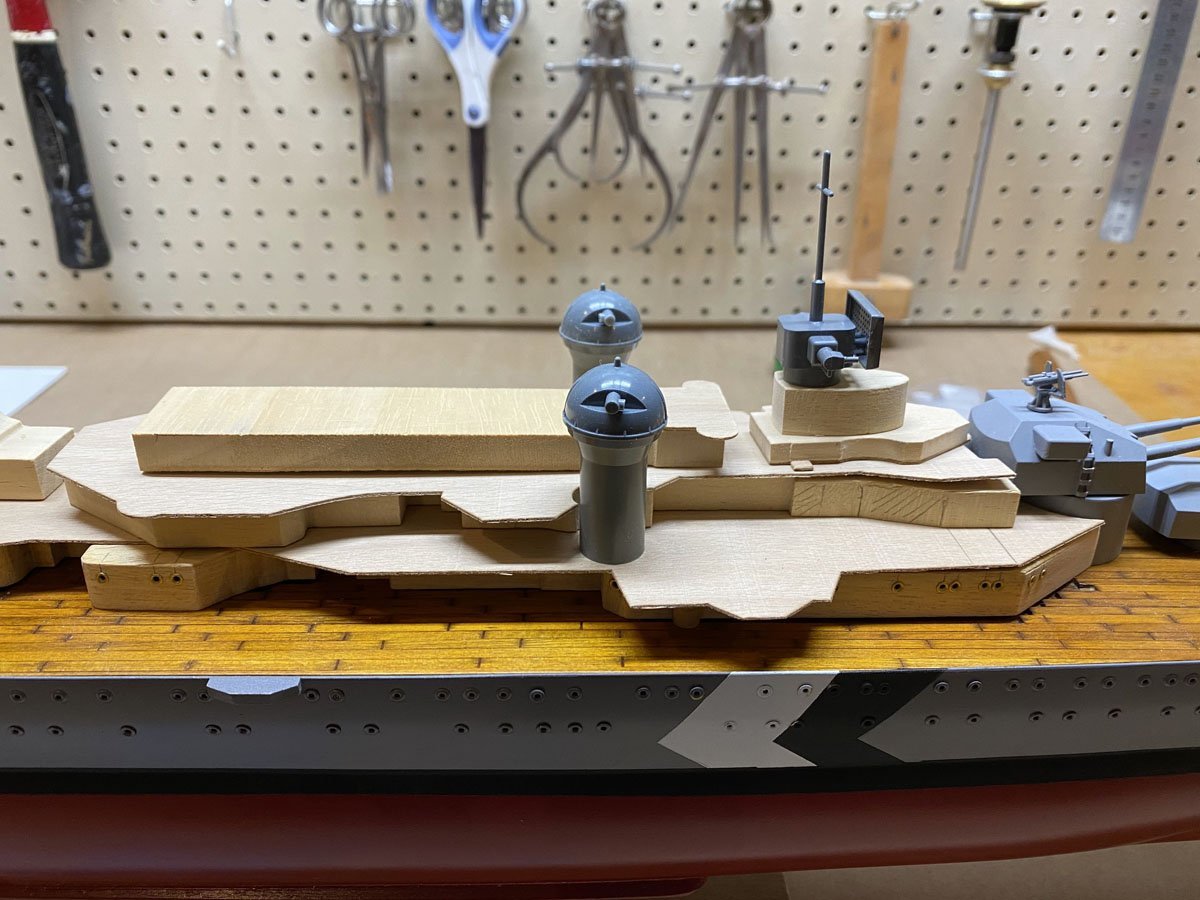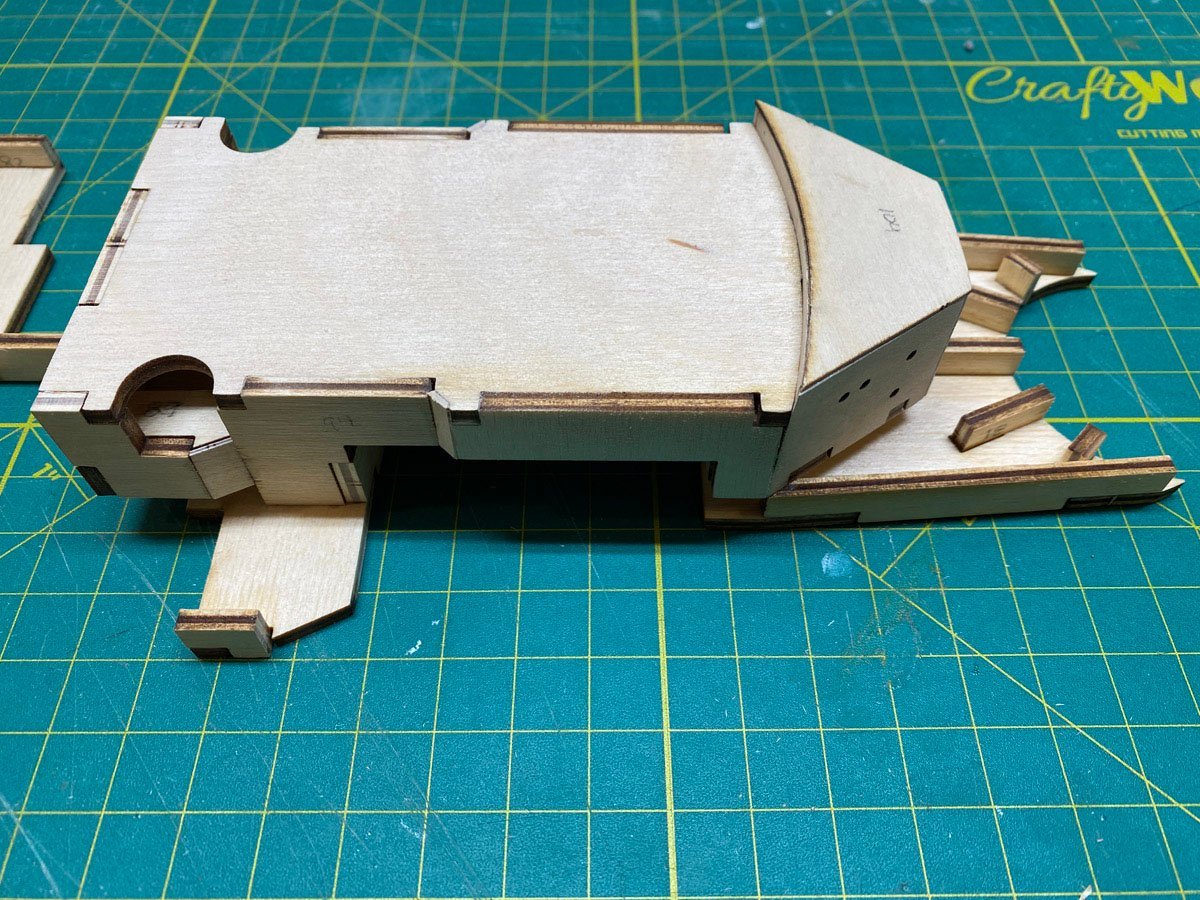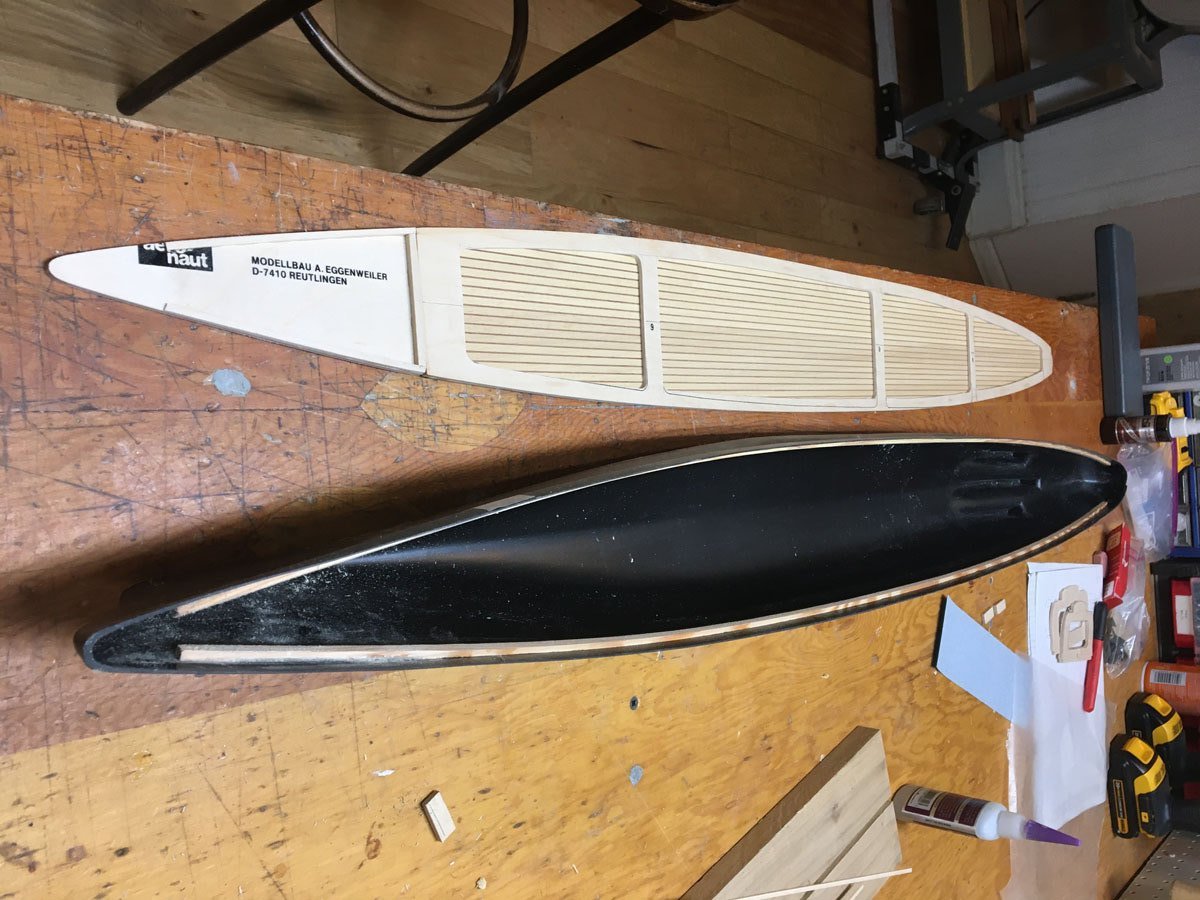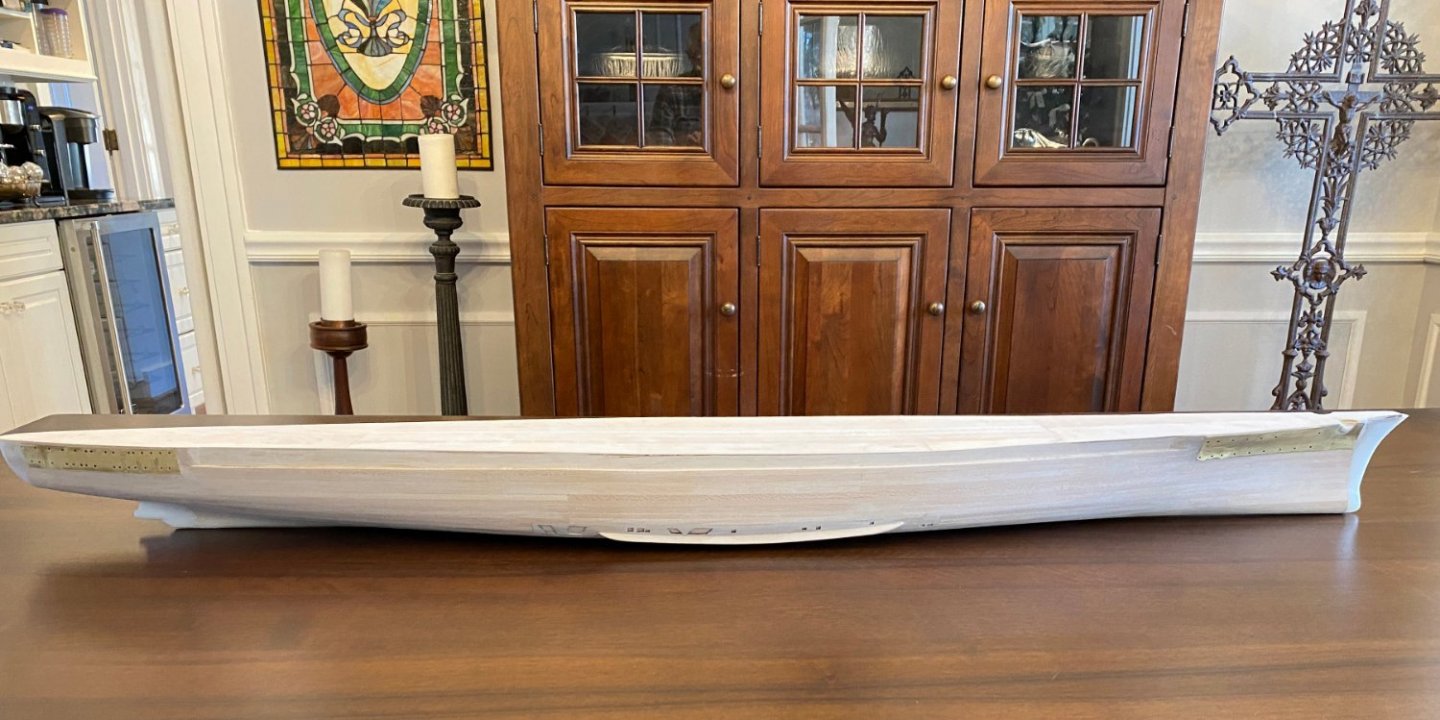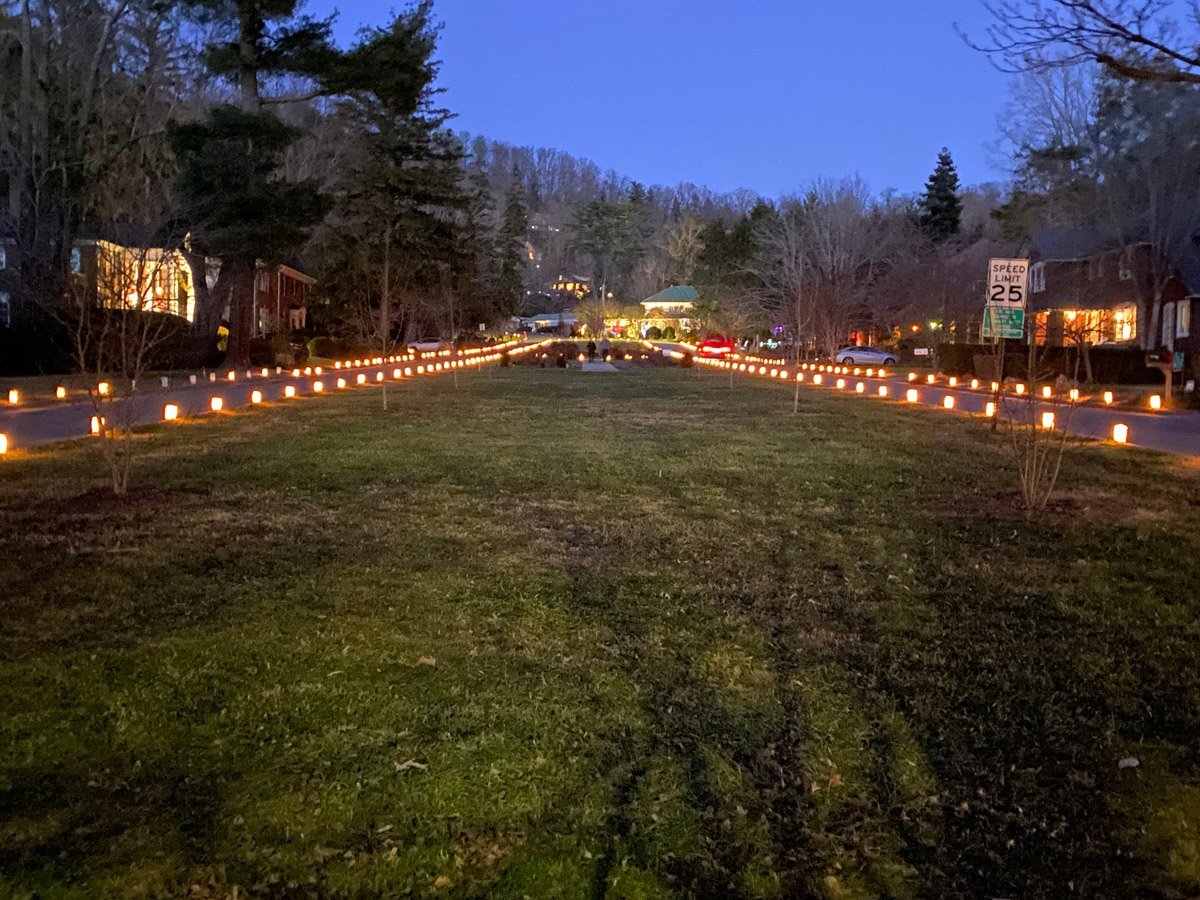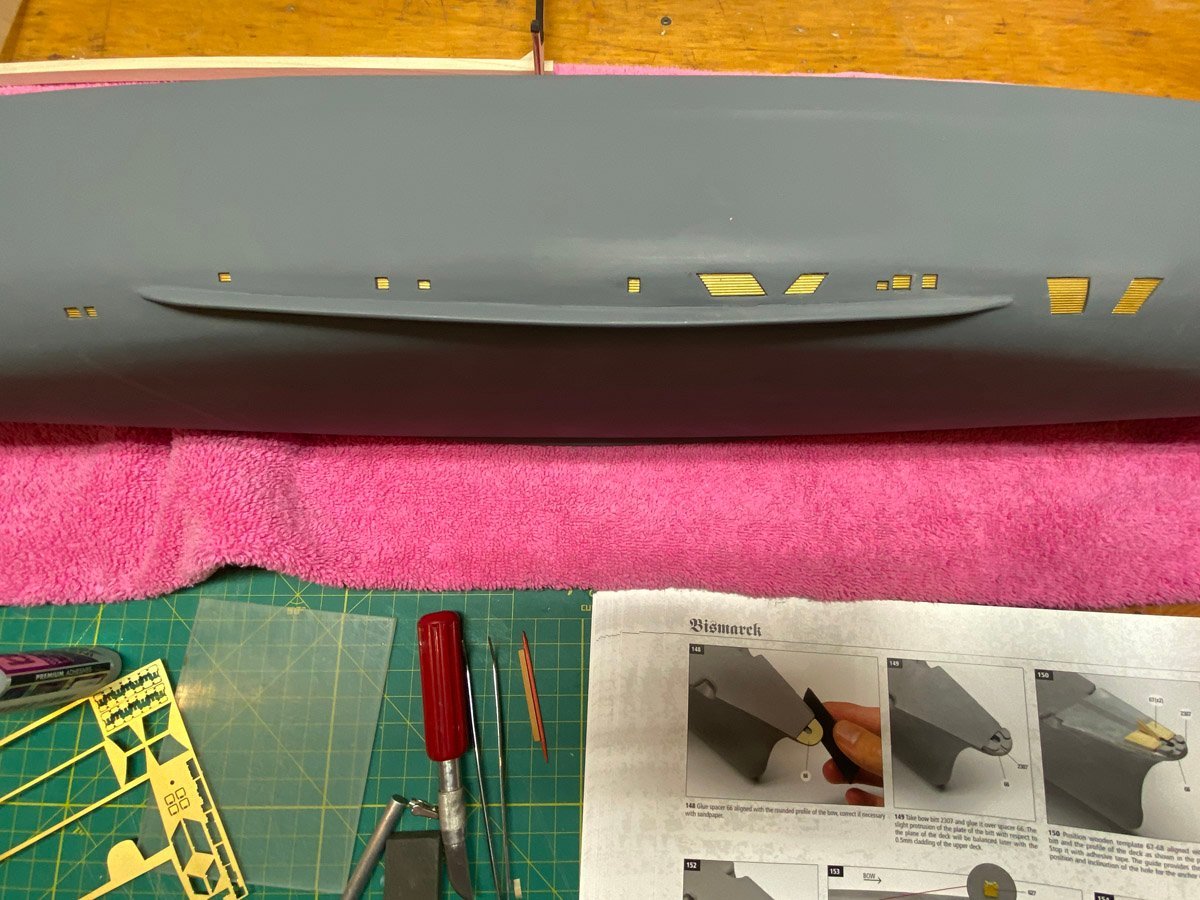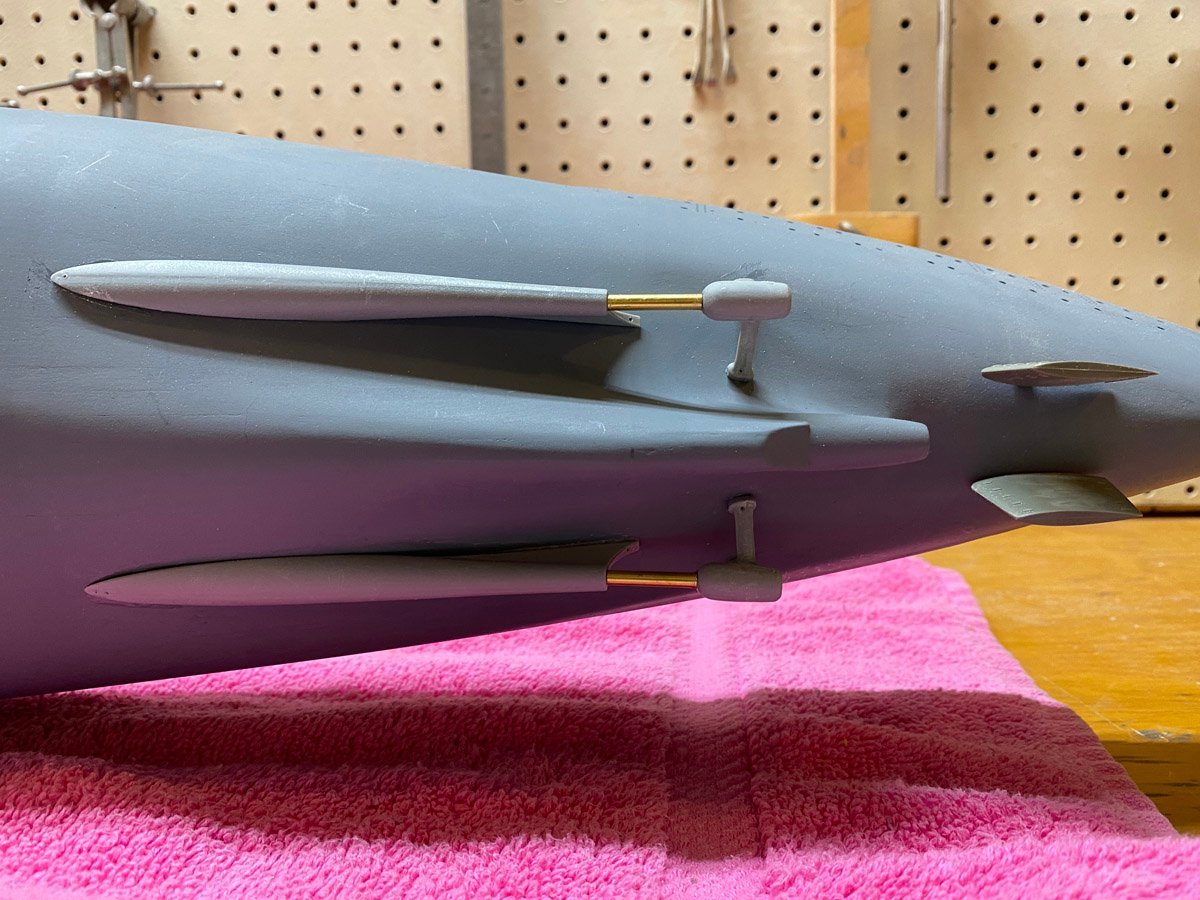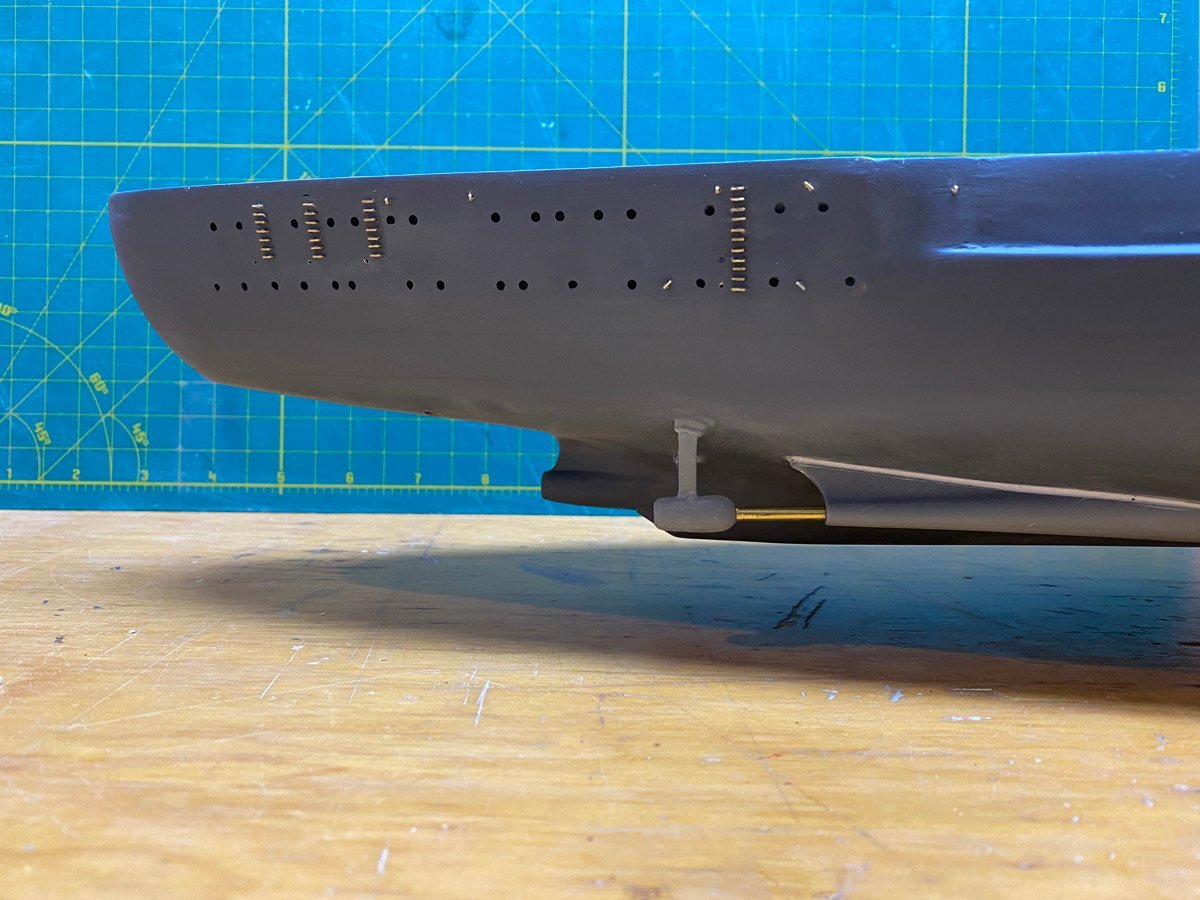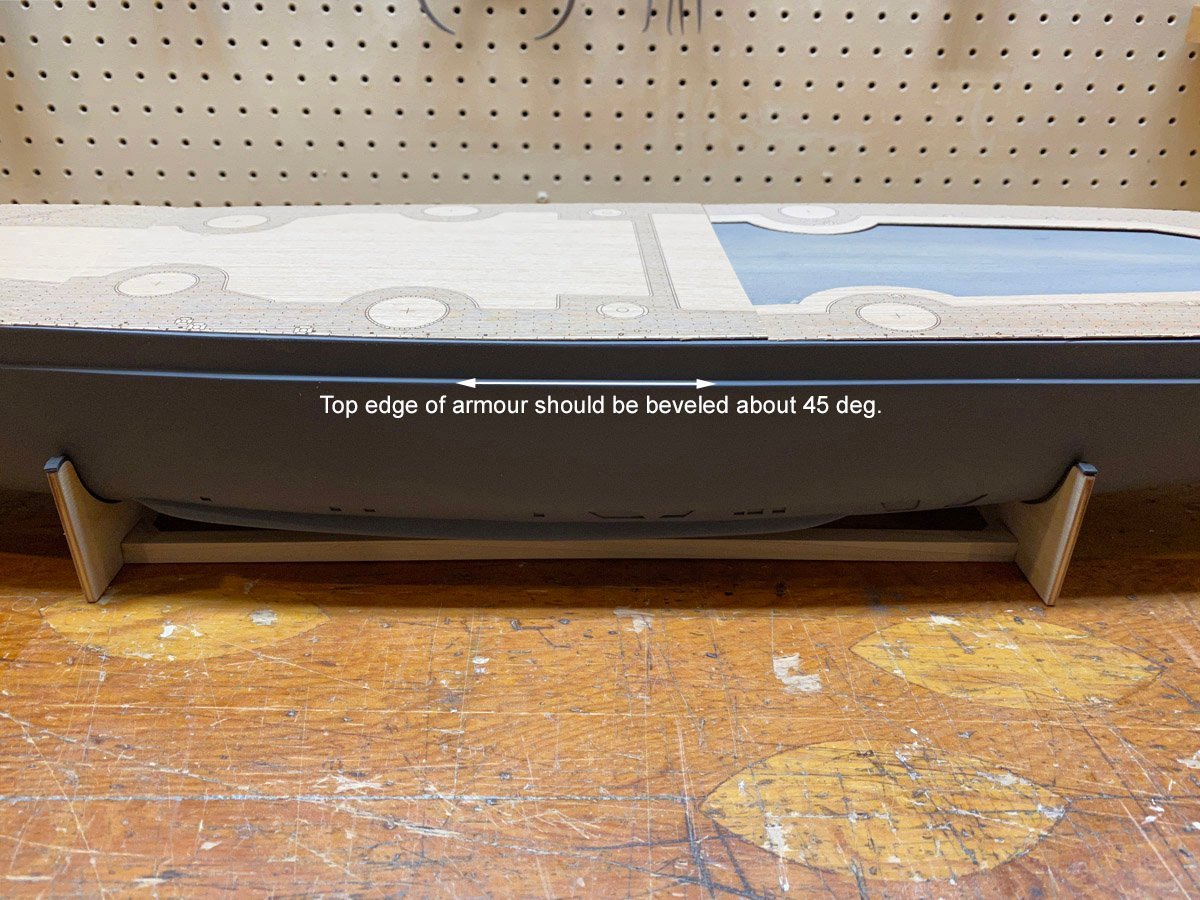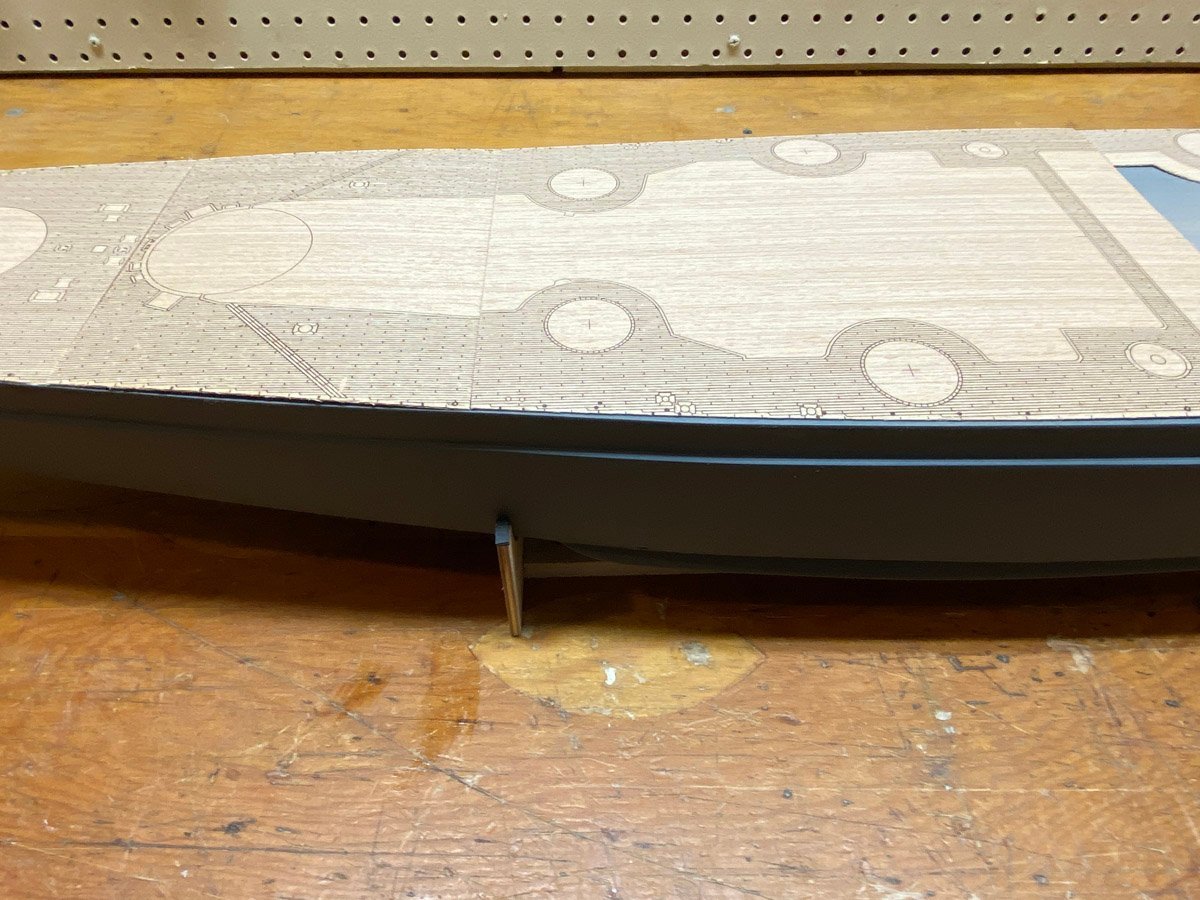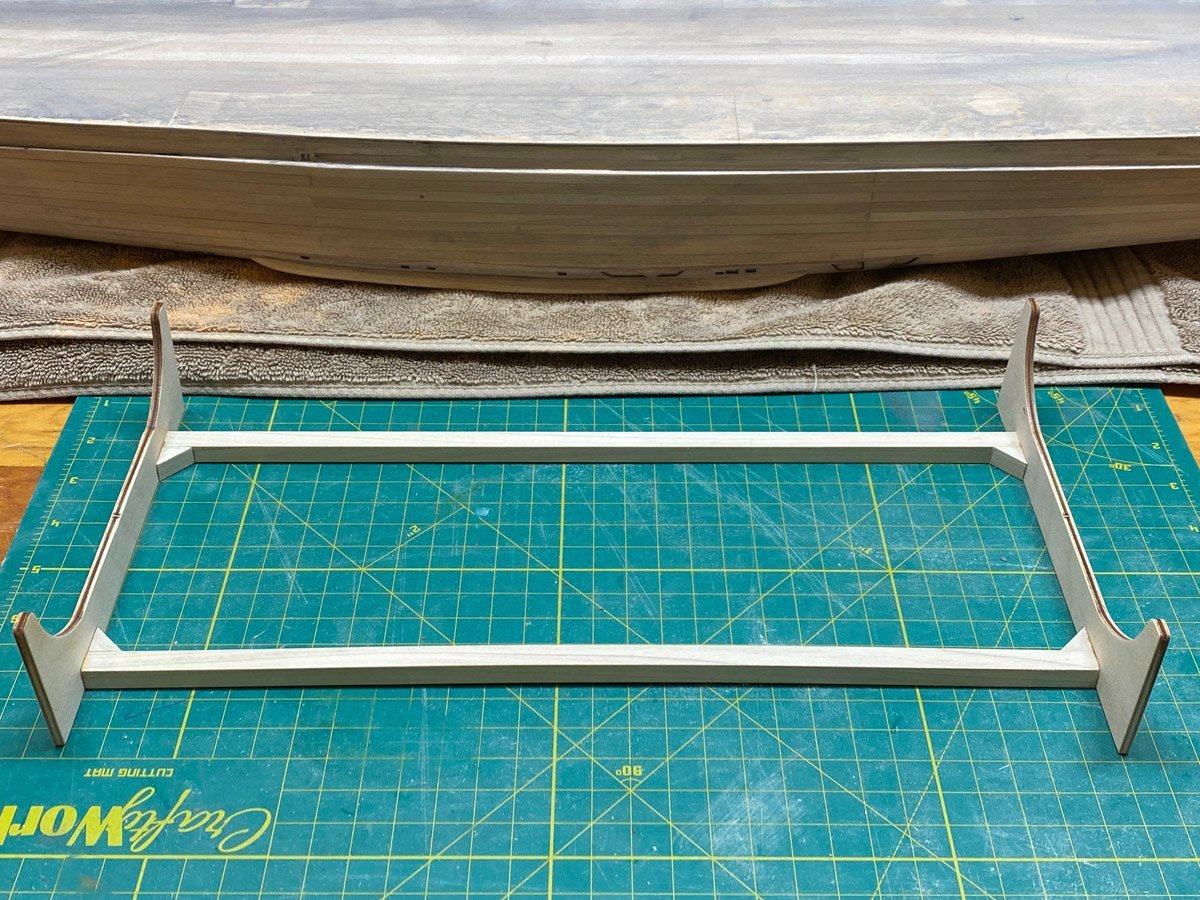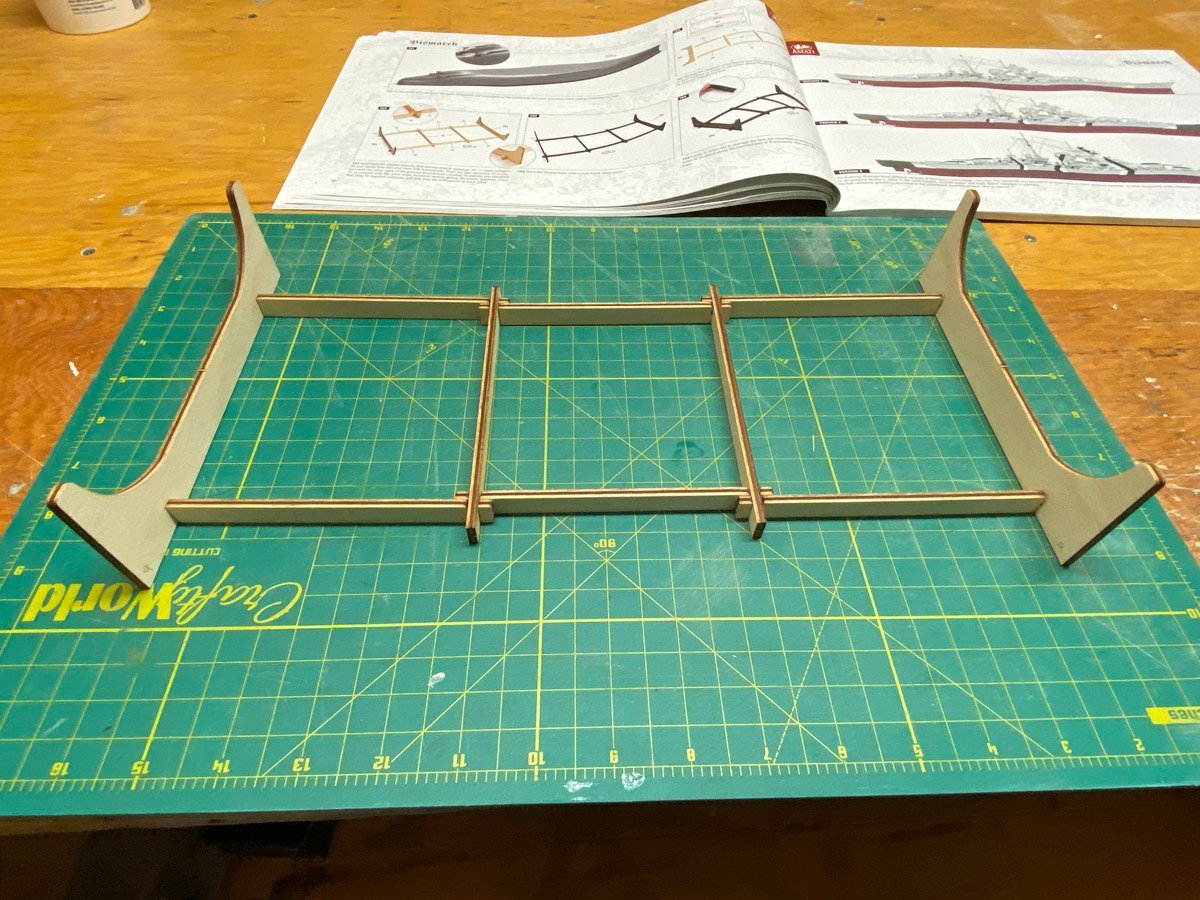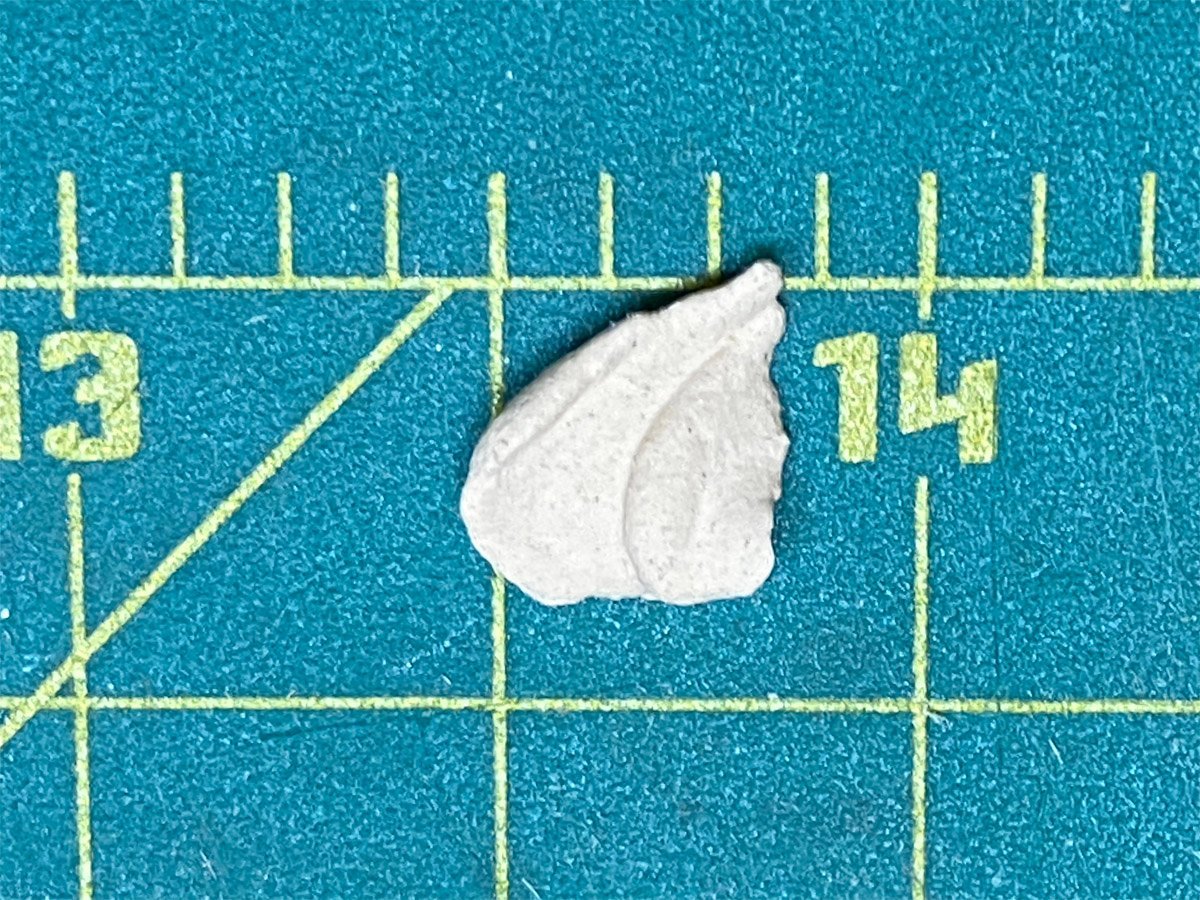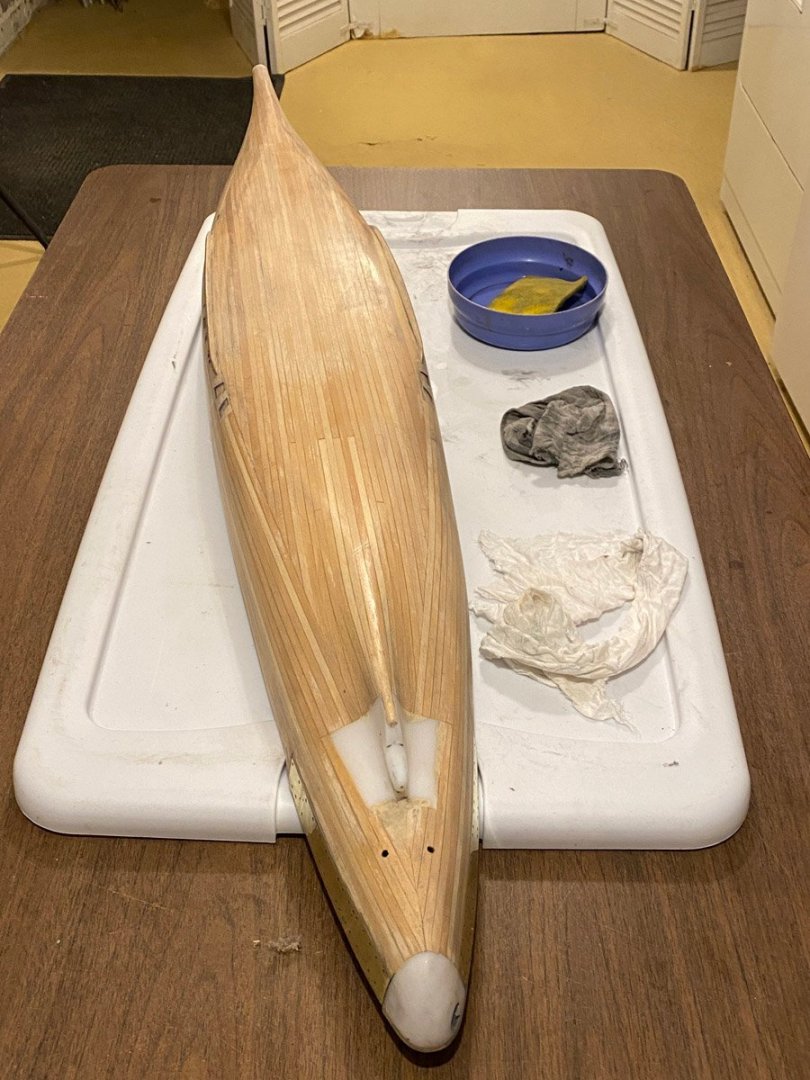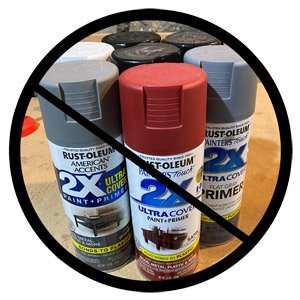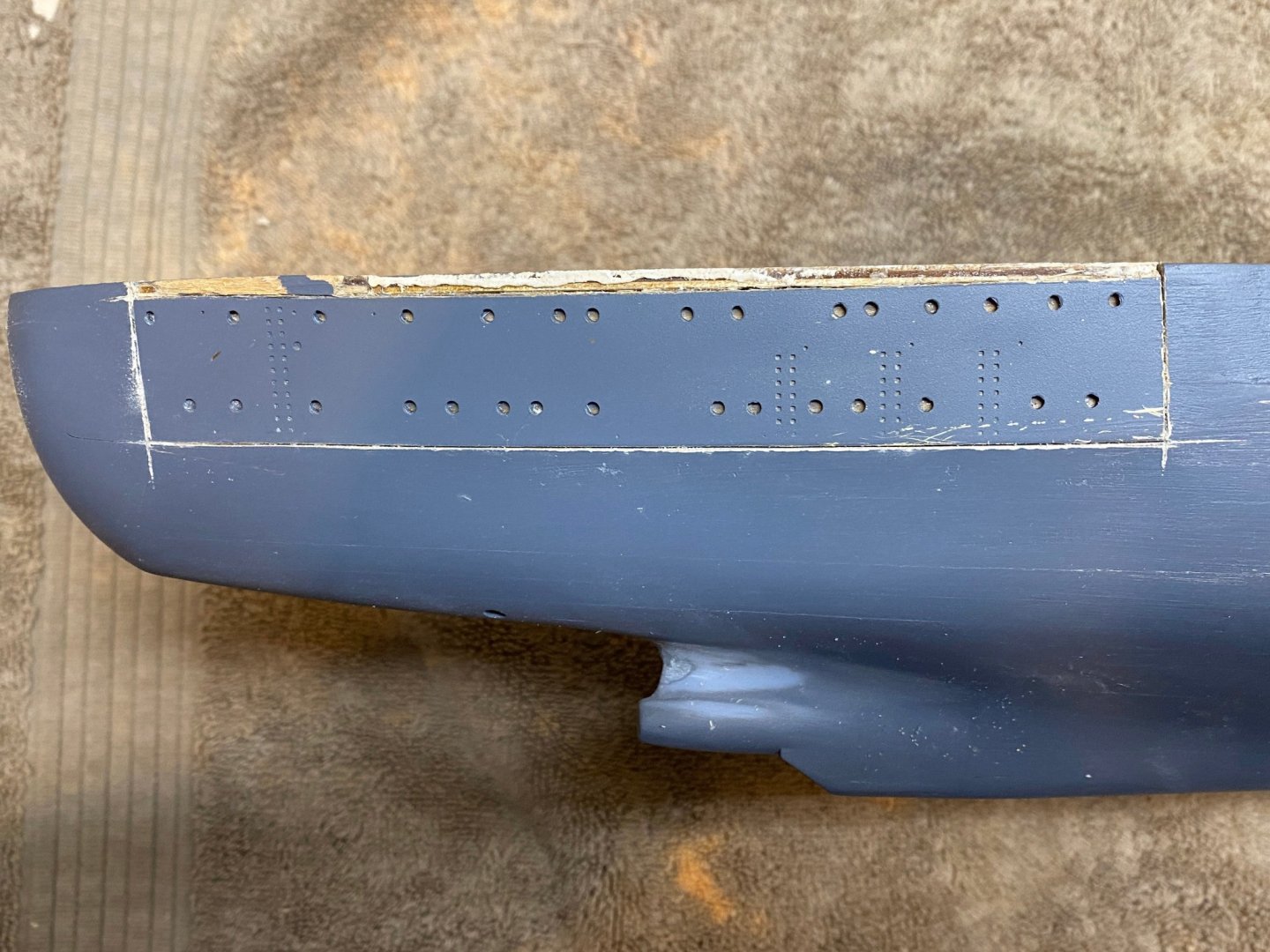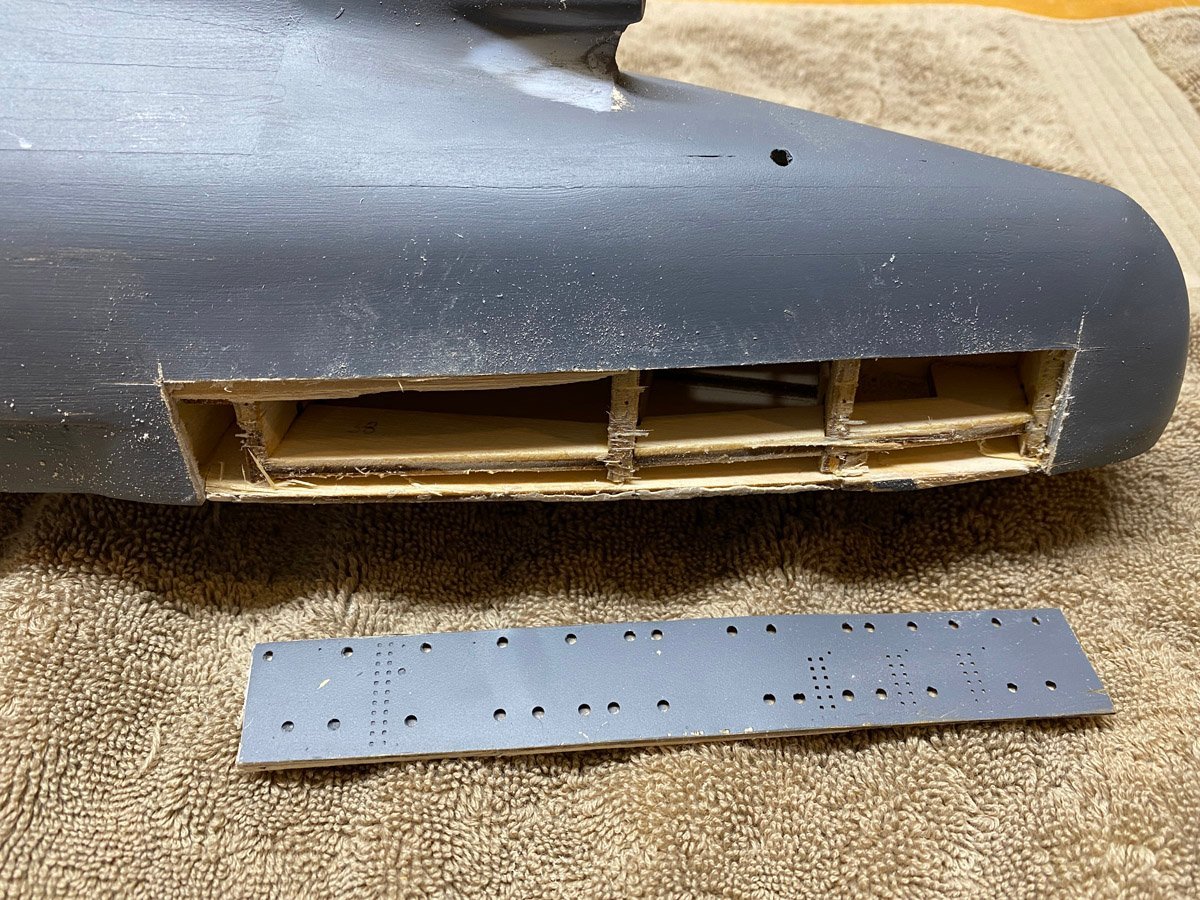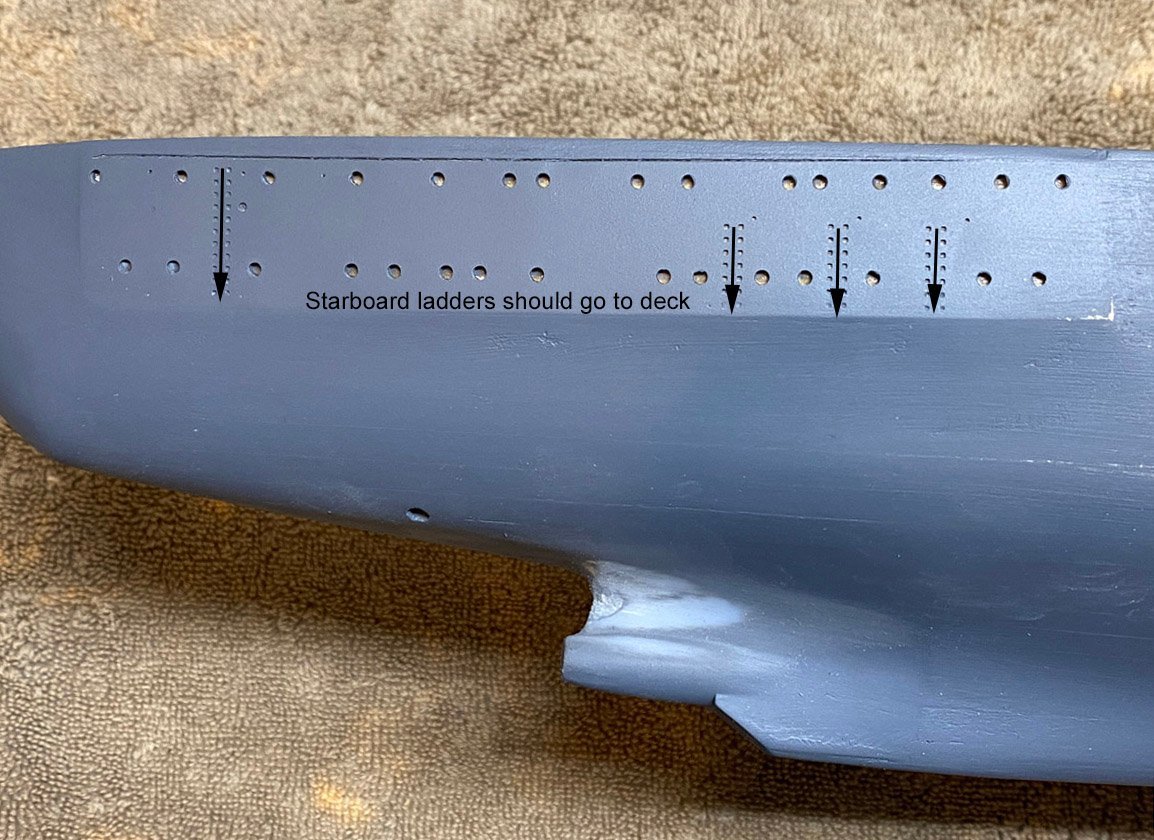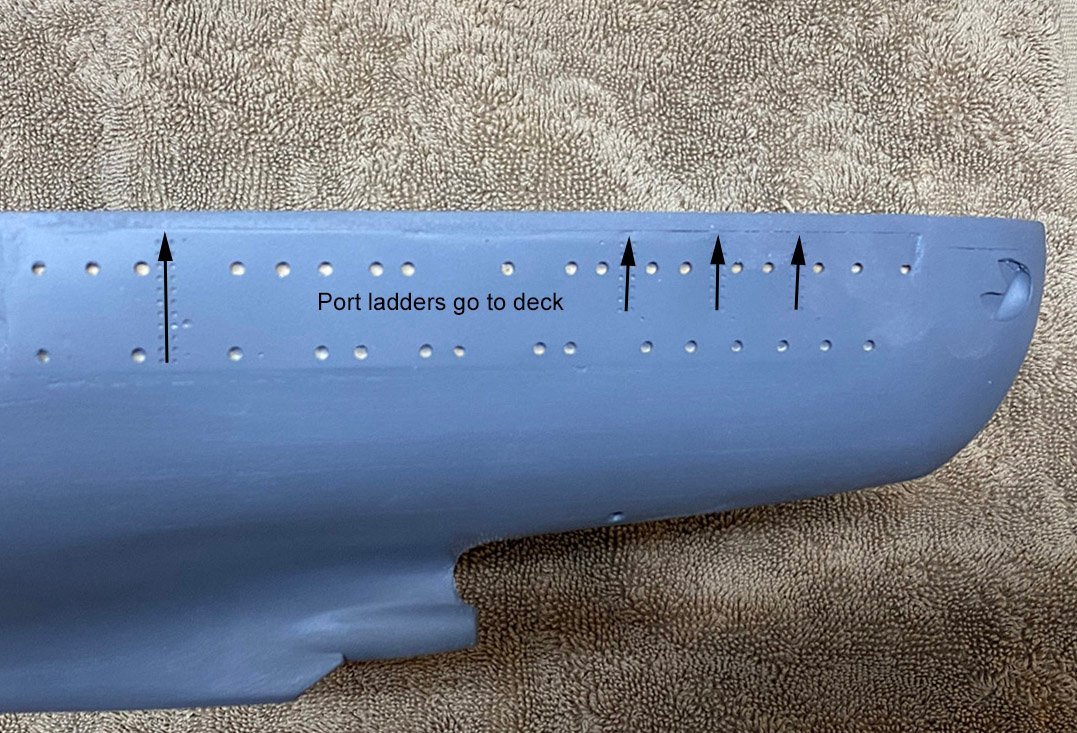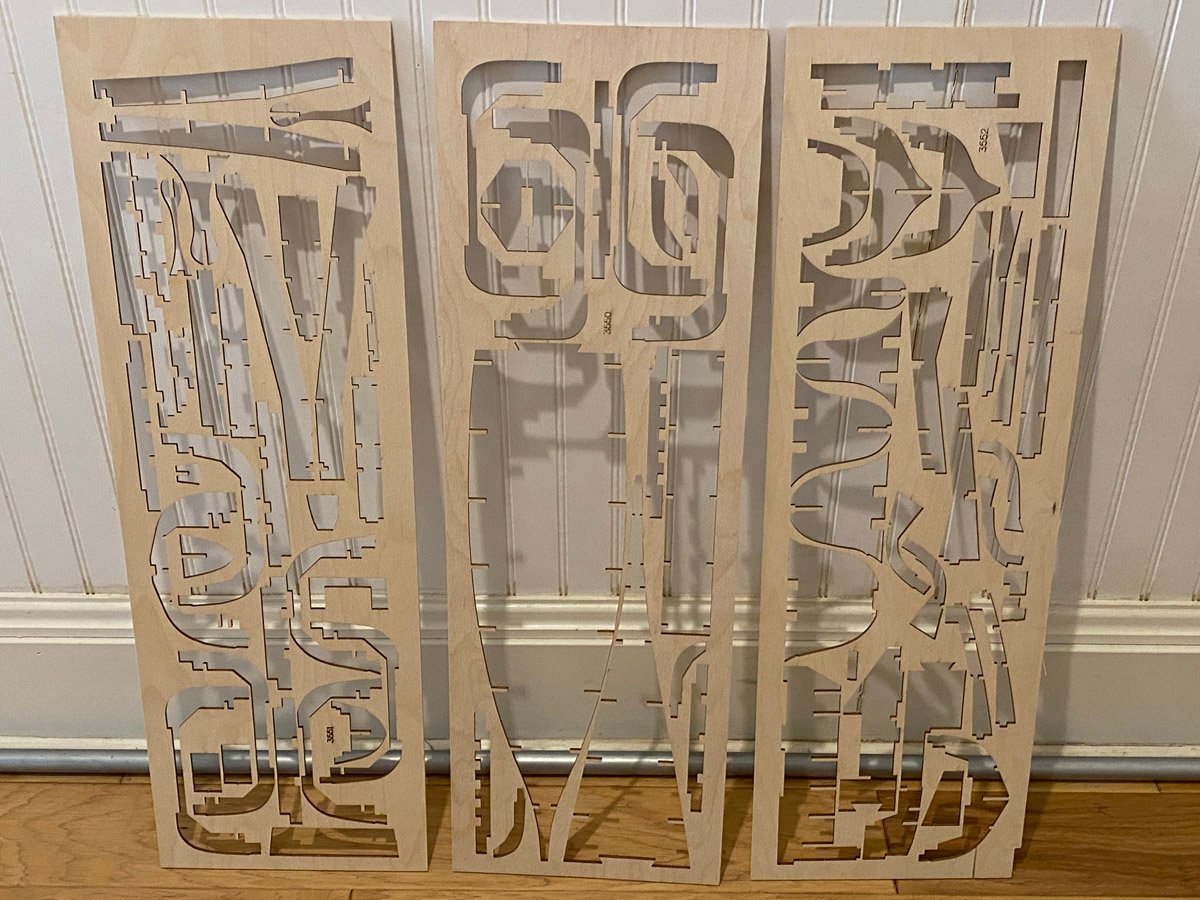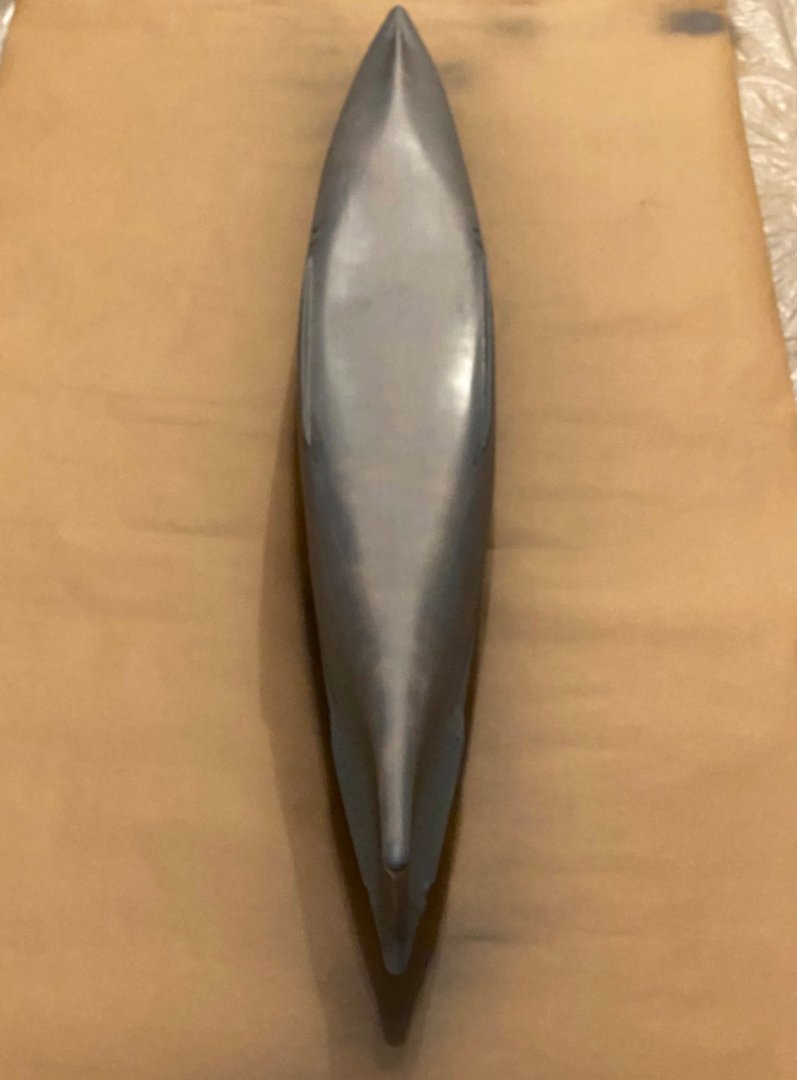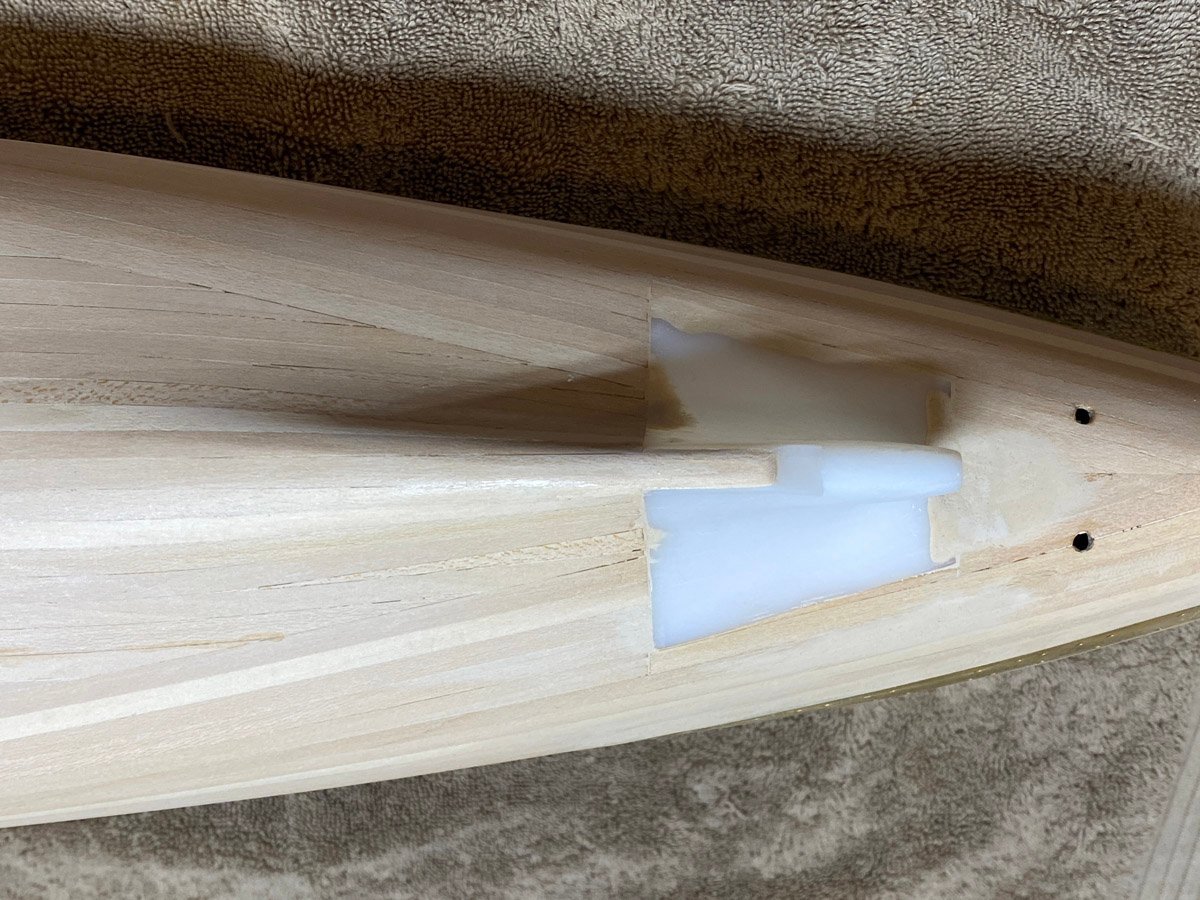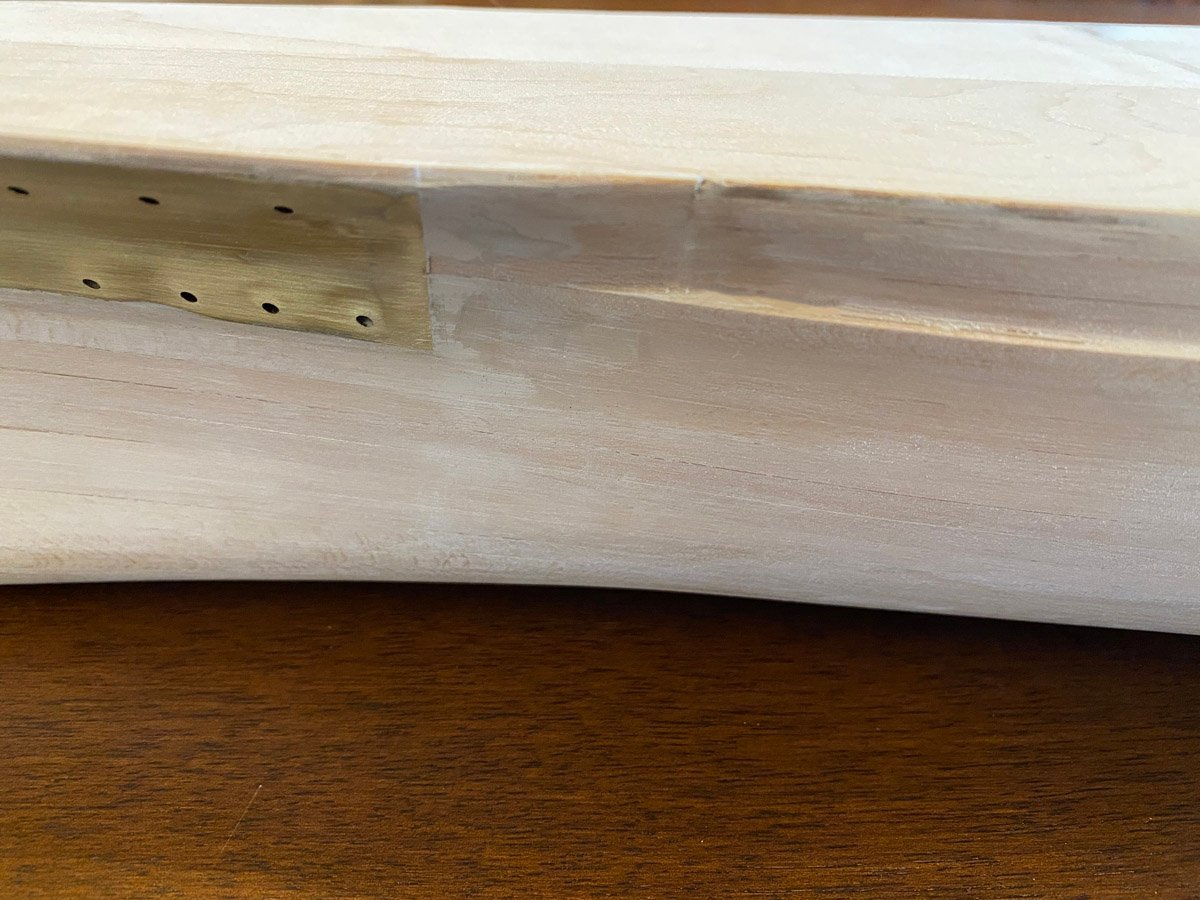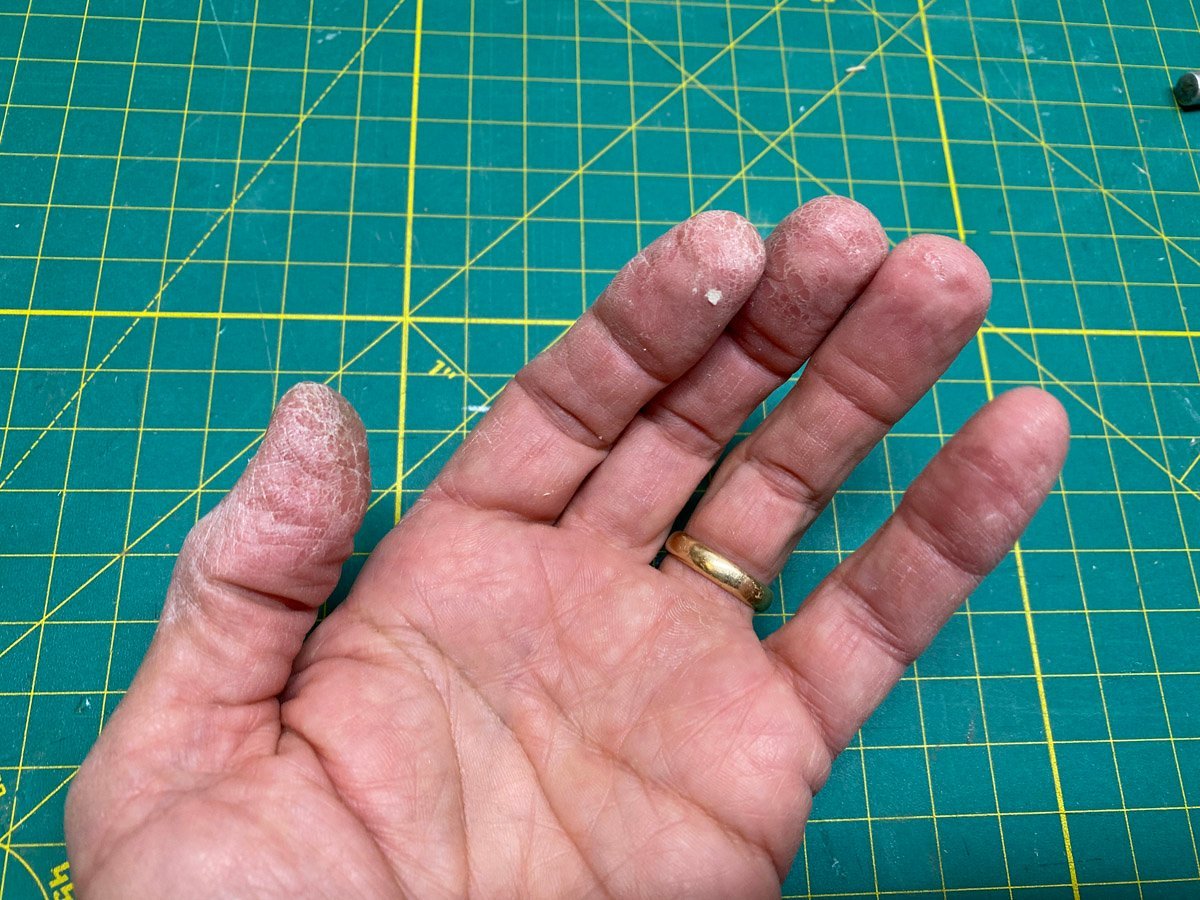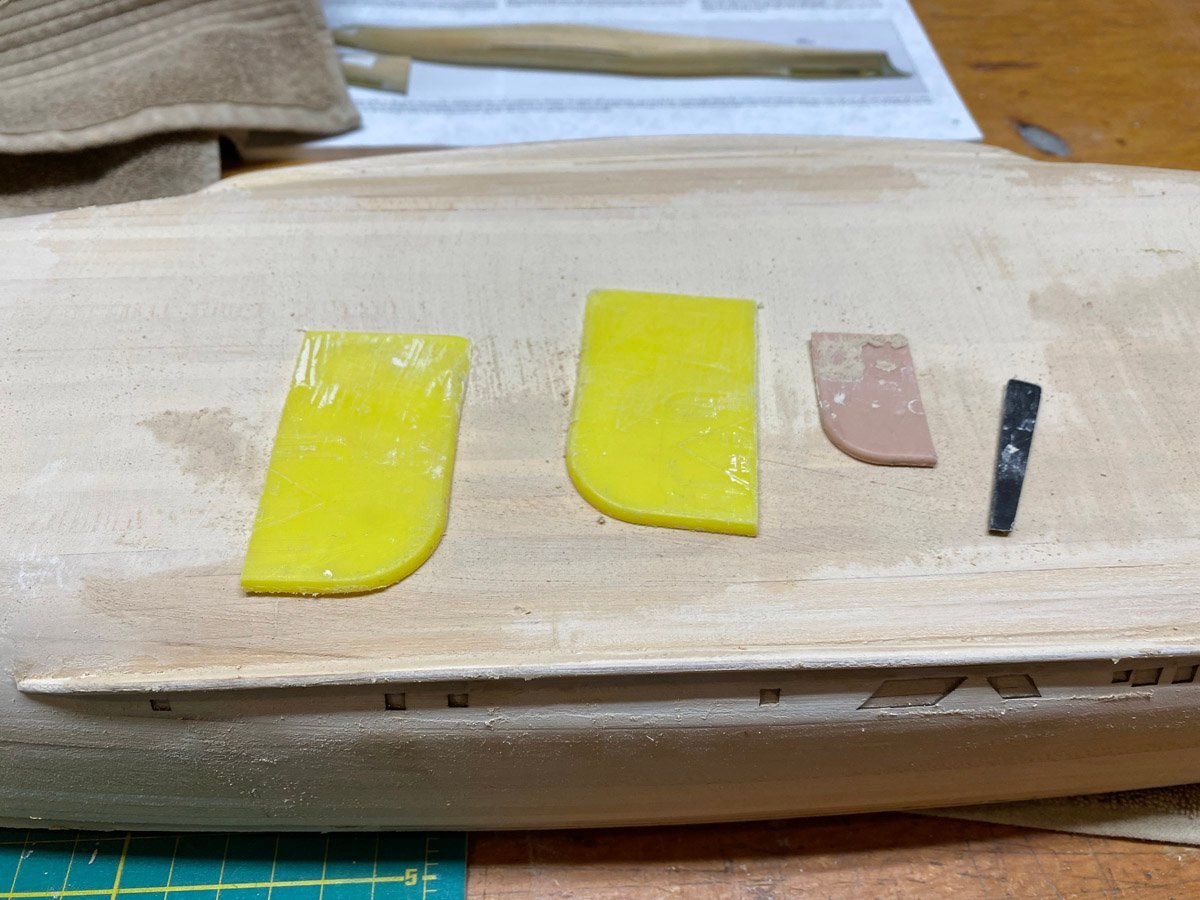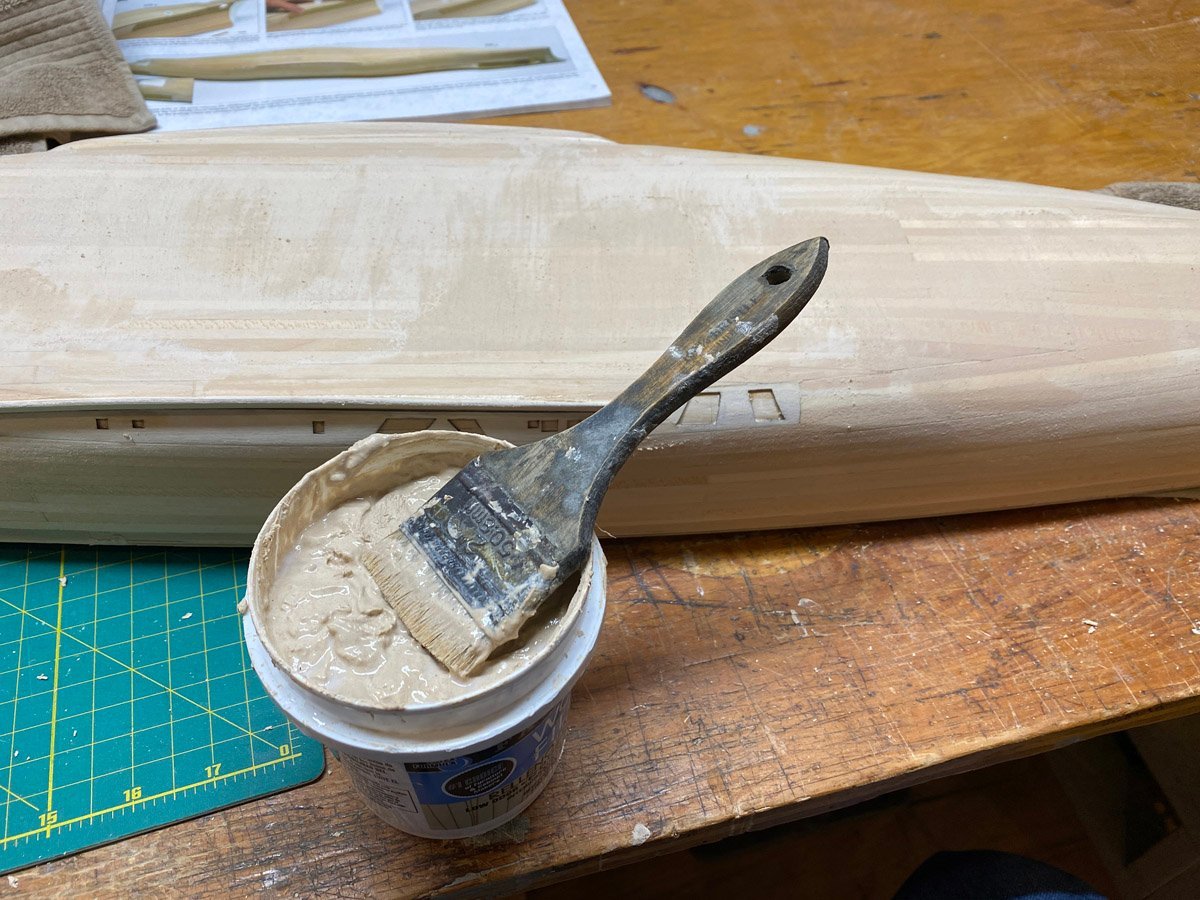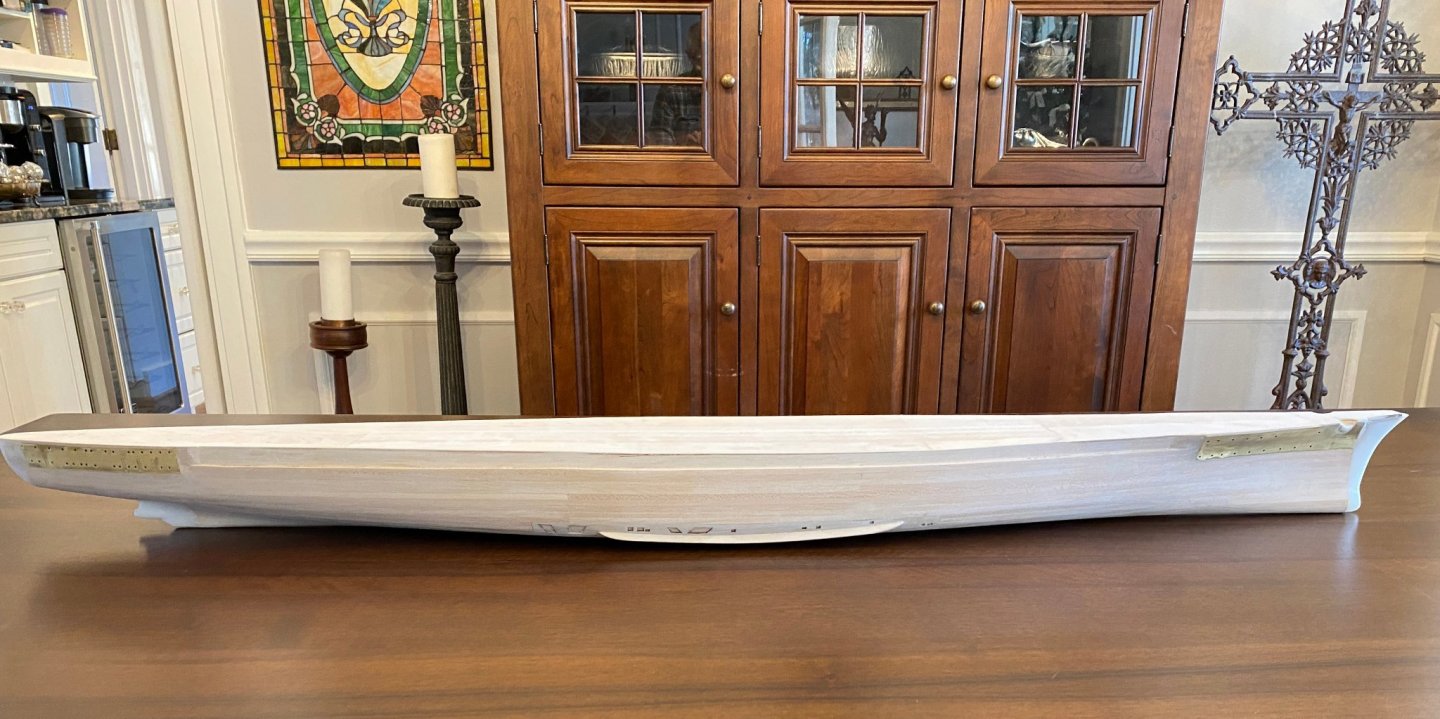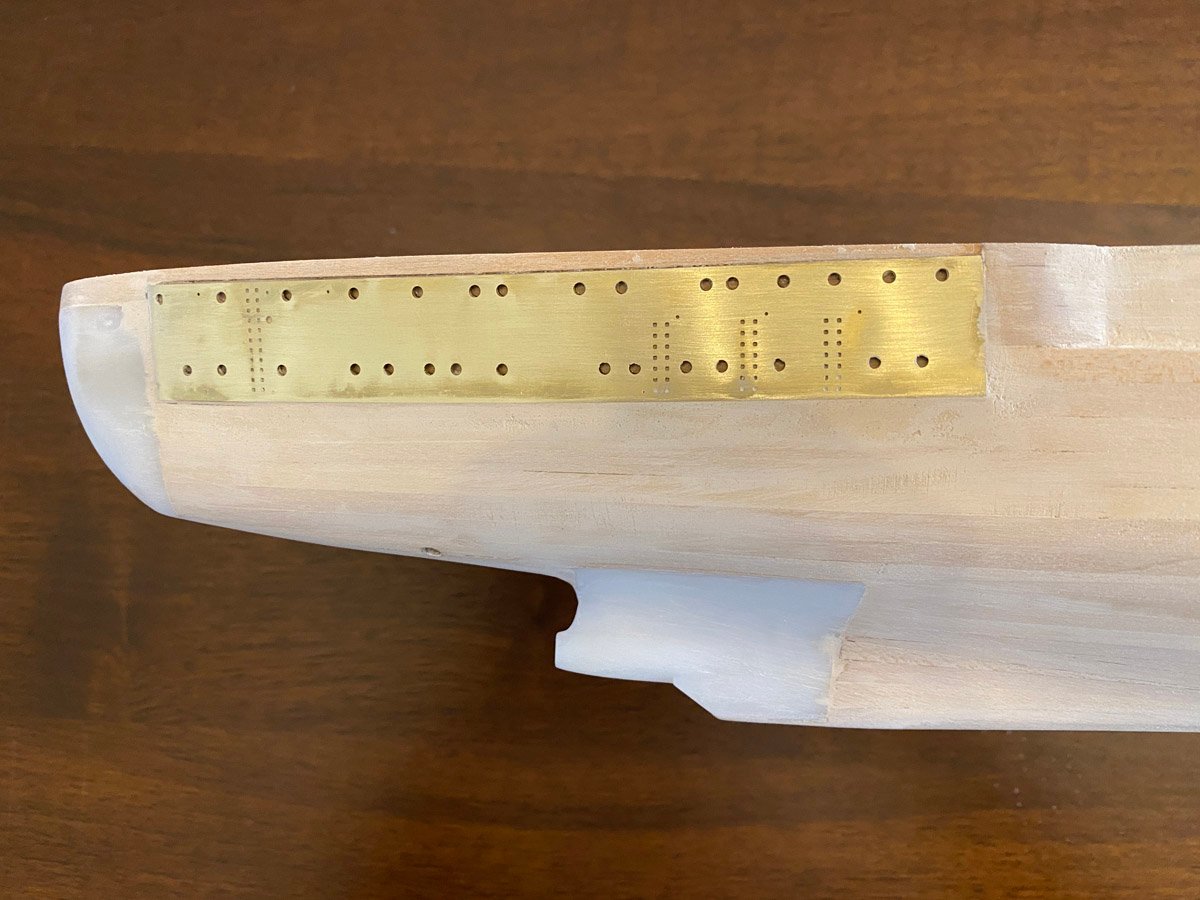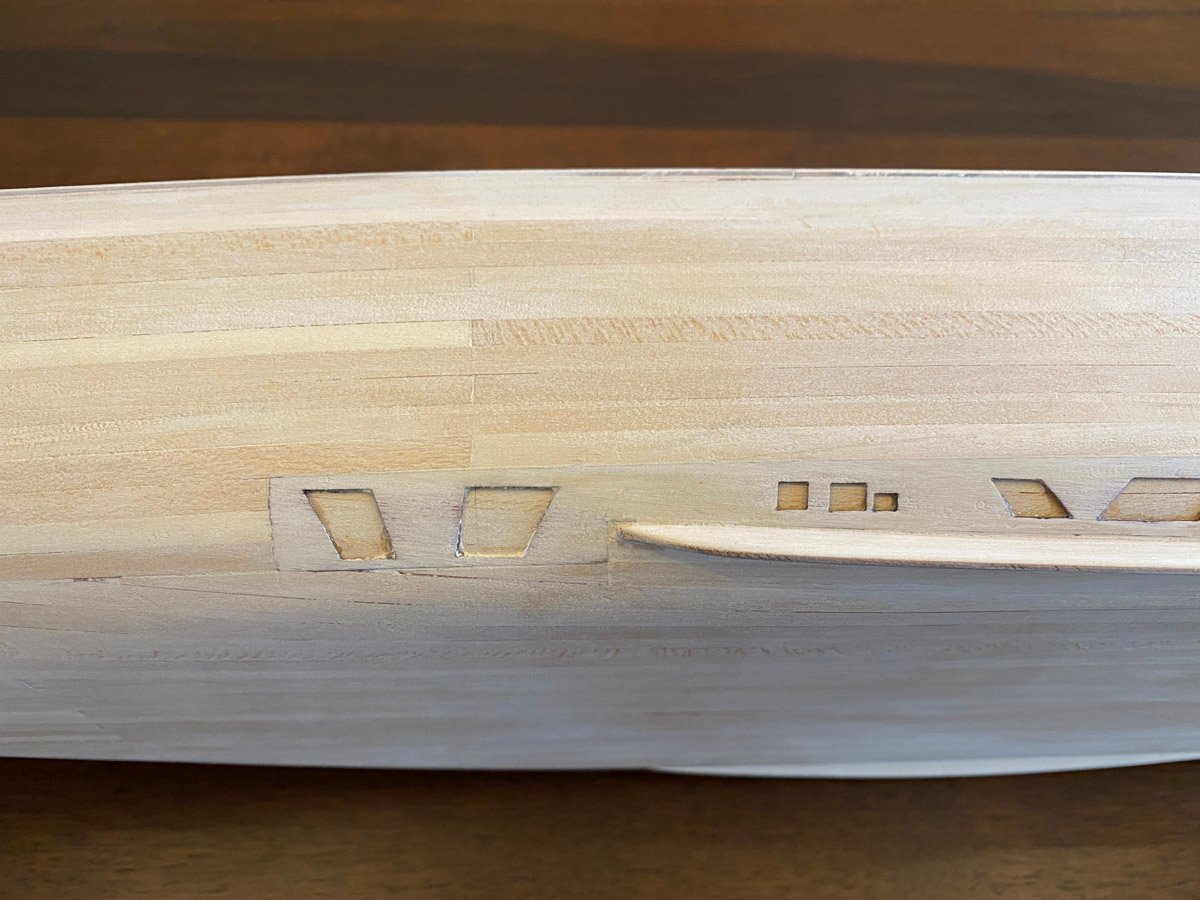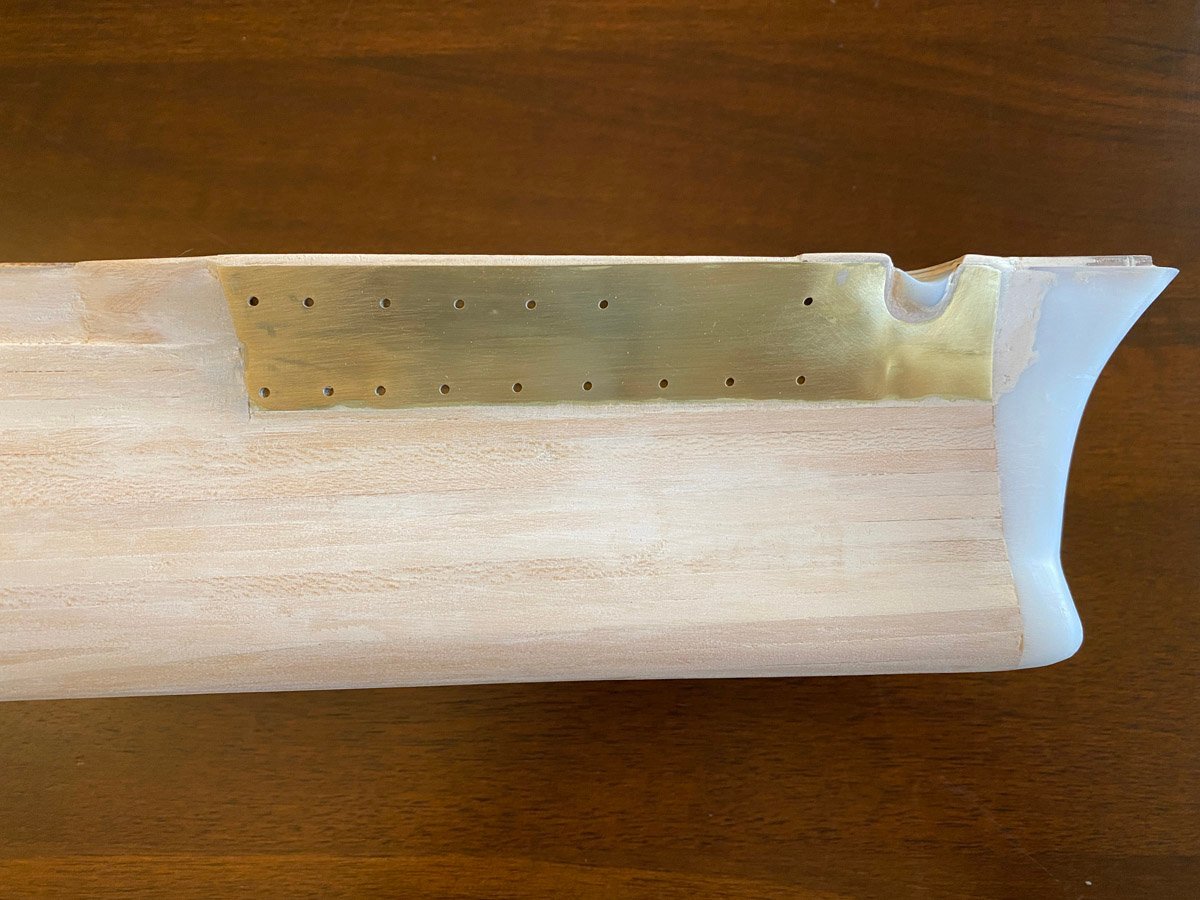-
Posts
697 -
Joined
-
Last visited
Content Type
Profiles
Forums
Gallery
Events
Everything posted by rvchima
-
Aeronaut vs. Amati About a year and a half ago I completed a 1/200 scale model of the Prinz Eugen light cruiser by Aeronaut. They also make a 1/200 model of the Bismarck and several other German WWII ships. Now I am working on Amati's 1/200 model of the Bismarck and I thought it might be interesting to make a quick comparison between the manufacturers. The Amati hull is built up plank on bulkhead, with some photo-etched (PE) brass pieces. It took over 100 hours to get to this much done. It would be challenging to install RC. The Aeronaut hull is molded plastic. It took a few hours to get this much done and would be perfect for RC. I have seen the Aeronaut Bismarck kit for sale without all the accessories relatively cheap. I wonder if the Amati model would fit on the Aeronaut hull? The Aeronaut Prinz Eugen superstructure is made of thick blocks with thin decks. Some eyelet portholes get added later. There is no PE included with the kit but I bought a PE kit made by Pontos for a 1/200 plastic Bismarck kit and used a lot of doors and other details on my model. I am just getting started on the Amati Bismarck superstructure. This little section has about 30 pieces in it. It will get wrapped in PE later. I feel like it is unnecessarily complicated. Thick blocks would work just fine. The Amati kit costs about 1.5 times what the Aeronaut kit did, but it will make up into a much nicer model.
-
Harry, It's exciting to see what lays ahead for me! In late Nov. & early Dec. of 2019 my wife and I took a cruise down the east coast of New Zealand. Such a beautiful country - we just loved everything about it. The closest we got to you in Manaia was Wellington. The cruise continued around the south island to Tasmania, Melbourne, and Sydney. I really wanted to see the Endeavour replica in Sydney Harbor, but it was on a cruise around New Zealand for the 250th anniversary of Cook's voyage. I think we missed it by a couple of days in two different ports. Did you get to see it then? Rod
-
My neighborhood here in Asheville, NC puts out about 900 luminaria on the three nights leading up to Christmas. The display is quite beautiful. Happy Holidays to you all!
-
Harry, The patient survived and is doing fine 😷. I've since attached the prop shafts, ladders, and hull gratings. I wanted to get some primer on them before posting but my spray booth, AKA garage, is blocked by my son's car here for the holidays. Rod The ladder rungs were not fun to attach. Since my port and starboard pieces got swapped I had to drill a few new holes for miscellaneous eyelets that were in the wrong places. Note to RC builders -- The shaft supports are flimsy plastic and are not drilled. You would probably have to drill the long support and remake the short support from stronger material. The plastic rudder shafts are long but there is no bearing for them. The gratings popped in easily.
-
Ted, Thank you for posting your experiences with the Rustoleum products. They do have a good range of colors and are working well for you, so stick with them. I have used successfully them in the past, but have had enough bad experiences that I just don't want to mess with them again. It was the 2X primer that I had trouble with on the Bismarck and the earlier tug. I am using Krylon paints now. They contain a long list of hazardous solvents so you probably shouldn't use them indoors. They are dry to the touch in 20 minutes and completely dry in an hour. Krylon does not have as wide a range of colors as Rustoleum, but I will be airbrushing most parts above deck with acrylics anyway.
-
I did not bevel the top of the armor belt at first. There is a cross section in Anatomy of the Ship that that clearly shows a bevel, so as long as I was refinishing the hull I sanded it in. You probably can't tell from this photo but it's there. It's probably to keep cigarettes from landing on the flat step :^/
-
I haven't unwrapped the deck veneers until now. The answer to your question is yes and no. In some places there is a space at the edge of the veneer as intended, but elsewhere the veneer is pretty close to the deck. I may have to trim it back a little, but not enough to lose the holes for the rail stanchions.
-
I Can't Stand It I decided to build the cradle while waiting for primer to dry. Amati's cradle is made of two end pieces joined by 8 small pieces stacked together like Lincoln Logs. The notches are cut a little large so everything is quite flimsy. I suppose this is another consequence of the original model being designed to fit inside a magazine. I replaced the Lincoln Logs with two pieces of basswood, and put gussets in the corners just for fun. More elegant now. However, I don't plan to use the cradle for the finished model. I have noticed that it is awkward to move a finished model on a cradle, so I have mounted most of my recent models on brass pedestals screwed through a wooden base into the hull. I've already placed an order for the pedestals.
-
Do your Models Rattle? After I closed up the Bismarck hull for good I flipped it around on the bench and something rattled inside. It seems like that has happened on every model I've ever made. Now I know that no one will ever shake my models (they had better not!), but It bothers me to know that there is something unintended inside. Well, after removing the upside-down back corner of the Bismarck I gave the hull a good shake and out fell a glob of wood filler that had squeezed through the cracks. I feel much better now. Ever happen to you?
-
Ted, that would have been Larry Ross. I never interacted with him directly until after he retired. Someone brought in a group of "old timers" to talk about lessons learned on the Centaur upper stage program. Not really my area but I attended and found his comments very interesting. It's great to see some superstructure coming together on your model. I'm dying to get past the hull but still have some major painting to do. And with the holidays coming up I'm getting less free time to work on the Bismarck.
-
More Deconstruction I started to sand the primer on the hull and found that it came off in gooey globs that clogged my sandpaper quickly. That was after 24 hours of drying time. I have had problems with Rustoleum products in the past. Last September I posted problems with Rustoleum primer not sticking to the hull on my Marie Felling tug. In 2016 I had problems with Rustoleum products on my Arleigh-Burke destroyer. Kurtvd19 did not have good things to say about their products at that time. Will I never learn? I eventually gave up and stripped the primer off the Bismarck with mineral spirits. I am discarding all my Rustoleum products and will never use them again.
-
Every Project Gets One BIG Mistake While I was waiting for the primer to dry I read this post by Piet: Thank you for catching this Piet. You are absolutely correct -- I interchanged the stern porthole cutouts on the port and starboard sides. There are slight differences in the number of portholes that no one will notice, but to make matters worse I got the starboard side upside down. Explanation The area with the portholes has three layers: a layer of planks, a plywood layer with the portholes pre-cut, and a matching PE layer. The PE pieces have tiny eyebrows etched over the portholes, but when I lined them up with the ply, the eyebrows ended up between the layers and not on the outside. I overlooked that clue. In fact I got the bow wrong too, but that won't matter much. Here's the port side showing where the ladders go. I did not realize that all the tiny holes are for ladder rungs. On the port side all the ladders point up. It will be OK. On the starboard side the ladders point down. And so, Deconstruction The PE didn't get too mangled, so I should be able to flip that piece and butter it back into place.
-
Primer So far I have used three full sheets of the laser-cut ply, built the hull, and sanded it until it looked like a piece of furniture. Time for primer.
-
Harry, Somehow I missed your build log. I haven't looked too far ahead in the instructions so it was interesting to see your work on the turrets. I will be following along. Rod
-
Side Step The instructions have somewhat confusing details about a step in the hull profile near the deck. The bulkheads have a small notch 12 mm high near the top that only get the first layer of planks. The rest of the bulkheads get two layers. This leaves a step about 1 mm wide along the center of the ship. There is little or no overlap of planks across the step, so it is a really weak joint. I squeezed some extra CA along that joint. There is a diagram of the armour belting on the Bismarck in Anatomy of the Ship, The Battleship Bismarck. Here I have copied the diagram on top of a side view of my model. The yellow belt near the deck was 145 mm thick but the green main belt was 320 mm thick. The difference is 175 mm, which at 1/200 scale becomes about 1 mm. I think that explains the step.
-
Second Planking Complete (almost) -- 95 hours, 51 days I haven't posted since just before Thanksgiving but I have been working on the Bismarck. I completed the second planking and have been sanding for days. The first layer planks are nominally 6.25 x 1.6 mm in cross section, but the second layer planks are 5.25 x 1.15 mm so the joints don't overlap. The first layer was glued mostly with Titebond but the second layer was glued with CA. Here's what my hand look like after several hours of planking with CA. Thank goodness for acetone. After LOTS of sanding I filled the second layer with Famowood wood filler, as recommended by Ted99. I started out using some plastic squeegees, which was slow, but then I thought of another way. One of my other hobbies is making stained glass lamps and windows. Leaded glass windows must be puttied to keep the glass from rattling and to make them weatherproof. Standard window putty is thinned to the consistency of yogurt and squeegeed into the lead came with a stiff paint brush that is cut off to about 1/2 inch long. I used my old putty brush with the Famowood and it went on quickly. I still used the plastic squeegees for tight areas and to remove some excess. After sanding I applied a coat of AquaCoat wood grain filler. This product is clear and much thinner than Famowood. It does a beautiful job of filling the grain and small cracks, but doesn't work as well for large voids. I still have some filler touch-up to go, and probably another coat of AquaCoat. Here are some views of the hull after the second planking. Side view I found the stained glass window in the background in an antique store and did major repairs on it. We found the wrought-iron cross buried in our yard (queue the scary music.) It is probably French or German from around 1880. It was broken in five pieces but I had it sand blasted and welded. Now back to the Bismarck. Bottom view Stern The PE brass piece fits exactly over a matching plywood piece. It seems like a good idea but it makes it impossible to sand that area to match the surrounding planking. All you can do is putty everything and hope for the best. The resin stern and center prop mount are also hard to blend in. Center section The thin plywood piece has cutouts for cooling water grates to be installed later. This piece was difficult to install over the curved hull. The instructions recommend using an Amati plank-bending tool that I don't have, so I just soaked the piece and worked slowly with CA and finger pressure. The anti-roll boards (does anyone know the correct term for them?) were laser cut from plywood, so they fit the contour of the hull nicely but were difficult to shape in profile. The center ply is harder than the surface plys and doesn't want to round over. I was short about 10 pieces of second planking but had I plenty of extra from the first layer and used that above the anti-roll boards. LOTS more sanding to reduce the thickness later. Bow The bow has the same problems as the stern with matching the PE and resin pieces.
-
Ted, What a coincidence that you've been to Lewis/Glenn before. Most people have never heard of it but I really enjoyed working there. I've been to Australia twice but never Canberra. It looks like a beautiful city, and should have been a nice place to work and retire to. I like the photo of your spray booth, AKA balcony. I am always surprised at how much over-spray paint dust accumulates after a big paint job. Your neighbors on 17 are probably wondering why their deck is all grey. I have used Rustoleum Colonial Red satin on several ship models and think it looks pretty good. I am curious to see how yours looks with Claret-wine. I just finished my second layer of planking and am now sanding, sanding, sanding. I will post some photos in a day or two, but have some questions for you in the meantime. Did you sand over any of the PE brass porthole pieces, and were you able to clean that up with filler or primer? Same question for the resin pieces. Should the deck edges be flush with the last plank on the step? I assume that it should be but I have some overhang here and undershoot there, and wonder whether to correct that now whole I'm sanding. Rod
-
Early in my career I attended a meeting at the Naval Postgraduate school in Monterey to discuss ways to use numerical methods to submarine noise problems. It was a little premature - the numerical methods weren't sophisticated enough and computers weren't powerful enough yet. But I made several friends in the Navy and eventually did a lot of work with students at NPGS and Pax River.
-
Very interesting! I will ask you next time I have questions about ships. Have you made any models of subs? I am a retired aerospace engineer with 34 years at NASA Glenn Research Center in Cleveland. I developed numerical methods for predicting performance of jet engine components, so I don't know much about ships but I am pretty good at trigonometry and can guess how a range finder works.
-
The Gee Bee is a diecast model. It was the only thing I had that was small enough to sit on the deck. I love the GeeBee and have made a couple of stick and tissue models of it. Very difficult to cover.
-
I am not an expert on warships but I learned a little while building my Prinz Eugen. Early in the war the range for the guns was determined using optical range finders that sighted on the bow and stern of the ship, then triangulated. I suppose that you would need to estimate the length of the ship as well. If the ship looked shorter because of the camouflage it would appear to be farther away and the guns would overshoot. Later in the war radar range finders made the camouflage obsolete. (Forgive me if you know all this and correct me if I've got it wrong.) For the deck markings on my Prinz Eugen I masked off the stripe and sprayed it red. I drew the swastika in Photoshop Elements, printed it on good paper, sprayed it with clear, cut the circle, and glued it on the deck. The rest of the model was painted in the March 1941 Baltic scheme - not for historical reasons but simply because I liked the dazzle camouflage and the red gun turrets. I suppose that I'll have to paint the Bismarck for the same time period.
-
Here is a link with drawings showing 6 different paint schemes for the Bismarck. The swastikas were painted over after the sea trials and before the battle of the Denmark Strait. http://www.kbismarck.com/drawings.html
About us
Modelshipworld - Advancing Ship Modeling through Research
SSL Secured
Your security is important for us so this Website is SSL-Secured
NRG Mailing Address
Nautical Research Guild
237 South Lincoln Street
Westmont IL, 60559-1917
Model Ship World ® and the MSW logo are Registered Trademarks, and belong to the Nautical Research Guild (United States Patent and Trademark Office: No. 6,929,264 & No. 6,929,274, registered Dec. 20, 2022)
Helpful Links
About the NRG
If you enjoy building ship models that are historically accurate as well as beautiful, then The Nautical Research Guild (NRG) is just right for you.
The Guild is a non-profit educational organization whose mission is to “Advance Ship Modeling Through Research”. We provide support to our members in their efforts to raise the quality of their model ships.
The Nautical Research Guild has published our world-renowned quarterly magazine, The Nautical Research Journal, since 1955. The pages of the Journal are full of articles by accomplished ship modelers who show you how they create those exquisite details on their models, and by maritime historians who show you the correct details to build. The Journal is available in both print and digital editions. Go to the NRG web site (www.thenrg.org) to download a complimentary digital copy of the Journal. The NRG also publishes plan sets, books and compilations of back issues of the Journal and the former Ships in Scale and Model Ship Builder magazines.



